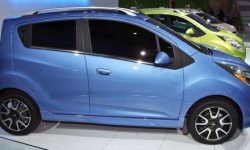October 18, 2012 - As the technology related to car safety advances, some ethical issues have arisen regarding the use of the information that is being recorded by newer cars. Cars have been tracking data while you drive since the 90s, but the type of information being recorded has changed over the years. More and more cars are implementing a device known as the EDR (Event Data Recorder)—this is basically a black box for cars. In the event of a crash, the EDR records the throttle and brake position, steering angle, yaw rate, speed, and impact sensor data. When the airbag deploys this information is saved permanently and can be accessed through a special OBD port. As of 2013, EDRs will be required on all new cars. What is the purpose of the EDR? It is designed to make crash investigations easier. It has already been used in many court cases across the US to determine whether the driver’s testimony is accordance with the information provided by the EDR. As the law stands now, no driver has to surrender their EDR data without probable cause, a warrant, or subpoena.
Neither an EDR, nor your navigation system in your car, can be used to track your car from an outside location. However, systems like OnStar and Hyundai Blue Link are designed to do exactly that—they relay GPS data to the operators of these services so that they can see where you are, how fast you are going, and what kind of state your car is in mechanically. These services are designed to reduce response time during times of crisis. OnStar can even shut down your car remotely in the event that it is stolen. Currently, none of these services can be implemented without the permission of the driver.
Last year, OnStar got in a lot of trouble because they were caught tracking their customers in an attempt to sell the data about their driving habits. They had made a subtle adjustment to their contract terms that made their spying “legal”. OnStar was forced to redact the policy after they got a barrage of bad press. Some insurance companies are doing what OnStar tried to do, but they are doing it in a more transparent manner. Statefarm and Progressive are offering their drivers discounts on insurance premiums if they voluntarily install tracking systems in their cars that would allow the companies to track their customers driving habits. The insurance company owns any data that they collect.
As long as these types of services remain voluntary, the issue of invasiveness seems mild. If someone wants to trade the information about their driving habits for lower insurance premiums that is their prerogative. As far as I can tell EDRs seem to be practical—they aren’t going to cause you trouble unless you’ve tried to escape fault in an accident that you actually caused. However, this is just the beginning of technology that tracks and records driver data. Who know where things will be 10 years from now? If you are concerned about your car being tracked by police, government, or insurance companies—don’t be. Why? Do you drive with your cell phone? Of course you do. Cell phone companies have been tracking our location data for years—information that they have quickly turned over to authorities or sold to advertising companies, yet still refuse to share with their own customers. There…don’t you feel better now?





